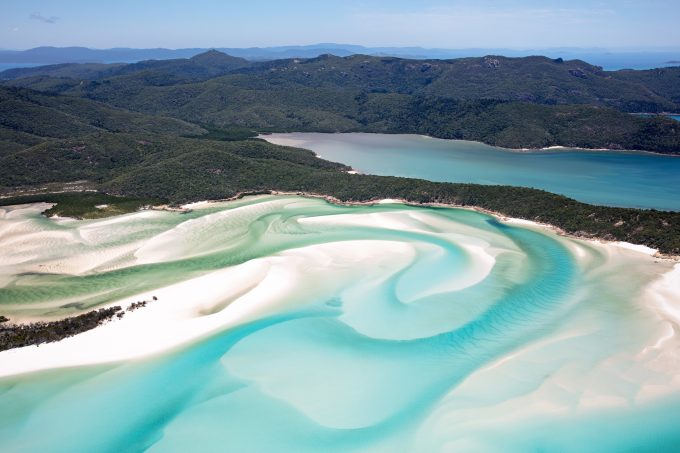
Whitsundays shark plan branded “borderline negligent”
A new five-point plan agreed by tourism, state and research leaders to manage sharks off the Whitsunday Coast has been slated by the Queensland opposition leader.
The plan was agreed at a state government-led meeting of stakeholders in Airlie Beach on Friday following the death of 33-year-old Victorian doctor Daniel Christidis in the tourist mecca of Cid Harbour on Monday.
The fatal attack followed two other maulings in September at the same location, one resulting in the amputation of the leg of 12-year-old Hannah Papps.
The stakeholder group rejected drumlines and nets as an option for local shark control, instead agreeing on research, swimming bans and education to minimise the risk of attacks.
But state Liberal leader Deb Frecklington says the Palaczszuk government’s response is “borderline negligent”, with “not one practical solution to put people before sharks”.
“For more than 50 years a network of drum lines and nets have protected Queenslanders from shark attacks,” she said.
“At last count there were more than 350 drum lines keeping Queenslanders safe up and down the coast.
“Labor need to explain why one of the only areas of Queensland that does not have drum lines or netting is the Whitsundays where there have been three tragic shark attacks in six weeks.
“So it is borderline negligent that Annastacia Palaszczuk’s only response to these terrible events in the Whitsundays is to call a meeting.
“I once again repeat my call for drum lines to be immediately installed at Cid Harbour and for a full parliamentary inquiry into Labor’s maladministration of Queensland’s shark control program.”
The five-point plan agreed on Friday by the stakeholder group, including state tourism minister Kate Jones, includes:
- Investing $250,000 in scientific research into shark prevalence and behaviour in Cid Harbour
- Maintaining Cid Harbour as a no-swim zone until that assessment is complete
- A high-profile education campaign to teach locals and visitors about shark safety
- Development of a SharkWISE education campaign similar to north Queensland’s CrocWISE initiative
- Regular meetings between industry stakeholders and experts to evaluate progress and discuss issues
Ms Jones argues drum lines and shark nets cannot guarantee swimmers’ safety and are not approved by the Great Barrier Reef Marine Park Authority.
“We are working within the framework that is set under national law,” she said.
“You can put drumlines out there but I still can’t look someone in the eye and guarantee them it’s safe to swim in Cid Harbour.
“People are deeply concerned about sending out the wrong message that would create a false sense of security.”
Fisheries minister Mark Furner agrees placing drumlines in Cid Harbour would not guarantee swimmer safety.
“Cid Harbour is a fair distance off the mainland and that’s one of the reasons why it would not work on a sustainable basis,” he said.
Ms Jones says the recent shark attacks are unprecedented and show more research is needed into shark behaviour to understand why they are happening.
“We heard very clearly from operators that they want scientific research done in Cid Harbour,” she said.
“They have been working and investing in business here in this region for decades, they know these waters, they are telling us they think something has changed, they want to get to the bottom of that, this scientific research project is at the direct request of tourism operators.”
While different methods of shark control are advocated by different groups, Ms Jones says there is consensus that education is the key to minimising risks.
“That’s why, as a direct result of today’s roundtable, we’ve committed to a SharkWISE campaign to educate people about the risks of swimming in some locations,” she said.
Before the Cid harbour incidents, no one had been bitten by a shark in the Whitsundays for eight years, despite the Great Barrier Reef’s large population of Tiger sharks.
Queensland Fisheries officers installed baited drumlines in the area where the victims were attacked in September, removing them at the end of the month after capturing six large Tiger sharks.
Friday’s round table meeting involved representatives from Tourism Whitsundays, tourism businesses and membership bodies, the Whitsunday Marine Advisory Group, commercial fishing, police, The University of Queensland, James Cook University, the Great Barrier Reef Marine Park Authority, Maritime Safety Queensland and Queensland Surf Lifesaving alongside Whitsunday mayor Andrew Willcox, Ms Jones and Mr Furner.

AccomNews is not affiliated with any government agency, body or political party. We are an independently owned, family-operated magazine.







So three shark attacks & two drownings result in no action by the state government (no surprise) only a wafflefest culminating in warning signs. North Qld you’ve been played for fools again.
I’ll be holidaying in Thailand this winter.